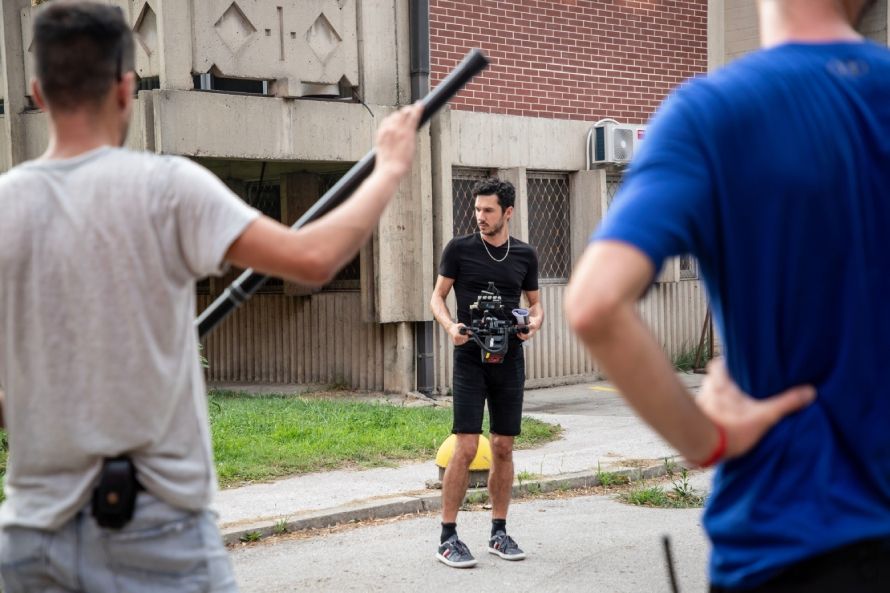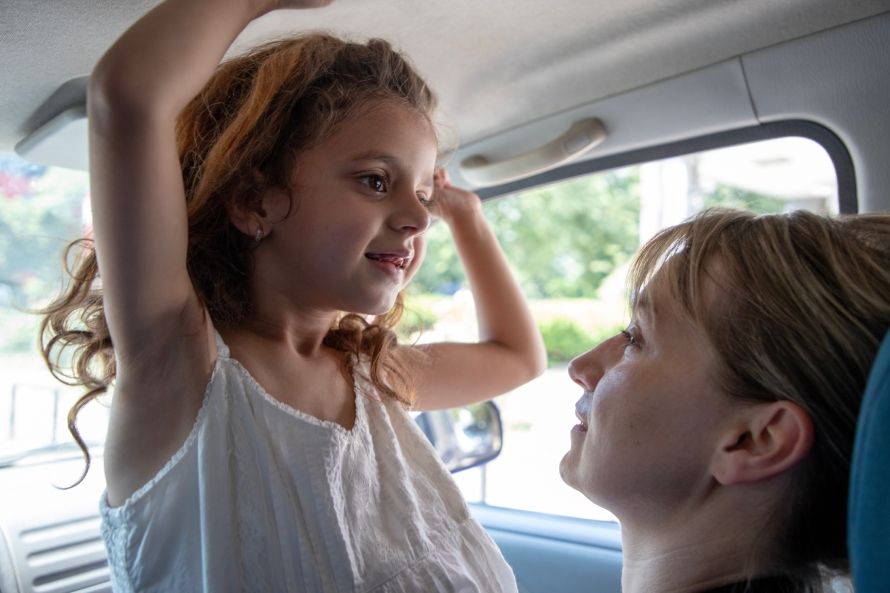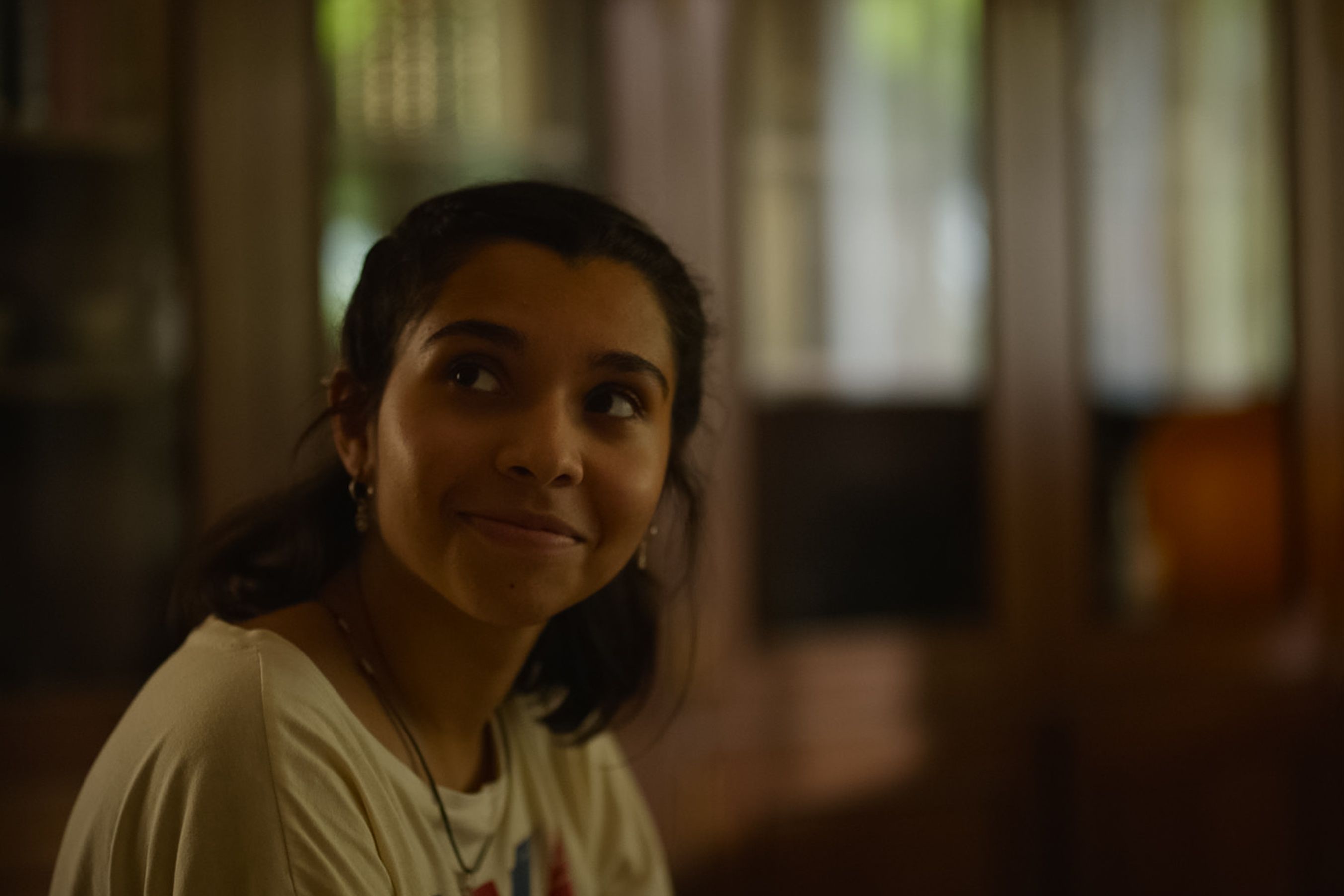Writer-director Goran Stolevski's Housekeeping for Beginners brings to light the complex work of creating a family out of a community of friends. Dita (Anamaria Marinca) steps up to be the mother to her longtime girlfriend’s (Alina Serban) troublemaking little girl (Dzada Selim) and rebellious teen (Mia Mustafi) with a lot of help from her friends, including her roommate (Vladimir Tintor) and his new boyfriend (Samson Selim). “These people are there for each other, whether they like the situation (or each other) or not,” writes Rolling Stone, making the film a primer “for turning a house into a home.”
To capture the intimate chaos of this rambunctious household, the filmmakers turned to cinematographer Naum Doksevski. Working closely with Stolevski, Doksevski used his camera to capture the intimate exchanges between household members and the turbulent reality of family life. “Doksevski’s compositions kept consciously tight throughout, and human activity frequently spilling from the edge of the frame—a suitable visual tactic to convey a makeshift family of people forever stepping on each other’s toes,” writes Variety.
We spoke to Doksevski about working with Stolevski, using natural light for emotional effect, and capturing the authenticity of the actors.
Housekeeping for Beginners is playing in select theaters, so get tickets now!
Official trailer for Housekeeping for Beginners
How did you end up working on Housekeeping for Beginners?
I met Goran for the first time while working on his short film Would You Look At Her, which we shot together. I really enjoyed working with him. I knew I wanted to work with him again on a feature film.
What were your first thoughts about how to shoot the film?
Reading the script felt like immersing myself in a series of images and cinematic atmospheres. He is one of the very few directors with whom I can communicate effectively with minimal words, and our collaboration is priceless to me. I was sure we were going to go for a very raw, cinema verité approach to this film, entirely handheld with a lot of camera movement, very often with long lenses. We wanted to stay as natural as possible in the approach to the light.

Goran Stolevski on the set of Housekeeping for Beginners
Did you watch Stolevski’s previous films—You Won’t Be Alone and Of An Age—to prepare for this one?
I watched both of them while we were in pre-production and they helped me a lot during that phase of preparation. Each of them possesses a different approach in terms of cinematography, yet ultimately, you can sense a common thread between them. With Housekeeping for Beginners, I believe we also created a film with its own distinct approach while still showcasing Goran’s well-known shooting style.
What inspired your shooting style for this film?
I draw inspiration from various sources like films, music, photography, and paintings on a daily basis. But when it comes to my work, I focus on the script itself. By connecting with the characters and their emotions, I can create an atmosphere that feels authentic and true to the story. Having a script like Goran’s Housekeeping for Beginners is an inspiration in itself.
How did you plan your shots?
Goran and I went to set every day before the rest of the crew and went through each scene to determine what we needed and from which exact angle we wanted to shoot the scenes for that day. If something deviated from our initial plan, we relied on our intuition, which, in most cases, proved to be the right choice.

Dzada Selim and Anamaria Marinca in Housekeeping for Beginners
Did you work with the production designer and director to create a particular color palette for the film?
Absolutely, for me, the color palette is something that is very closely connected with the overall feeling and mood of the film. Choosing the right colors, materials, and textures is one of my favorite parts of every pre-production. In this case, we were happy to have Anna Rzezniczek as a production designer and Sandra Cevreska as an art director, and they played a crucial role in crafting the atmospheres we aimed to achieve.
Stolevski allows his actors a lot of freedom of movement in scenes. How did you handle shooting that?
Shooting without too many limitations in space is my favorite. I believe that when actors are free to move wherever they wish in a particular moment, that creates authenticity. This approach was difficult for us, especially for my focus puller, gaffer, and key grip, but thanks to their professionalism and willingness, we could handle it.
You use light in an almost poetic way, creating very luminous shots of people.
Natural light is always my first choice. When it’s unavailable, I try to recreate it in the most natural and raw way possible. My experience in photography, particularly from my early days before transitioning to film, helps me every day on set. Observing light and understanding how slight changes in camera angles can evoke different emotions is crucial to me. The relationship between light, actors, and camera angle was fundamental in this film for me. I lit the house almost completely from the outside, which provided me the opportunity to experiment with various angles and movements.
How did you handle shooting in Shutka where there was little ability to control the set?
Shooting in Shutka was tricky, but at the same time, I found the neighborhood to be very cinematic because of its authenticity and surroundings. You can capture authentic moments that are very difficult or almost impossible to recreate elsewhere. We managed to shoot everything in the way we wanted thanks to the production team.
What do you hope people take away from Housekeeping for Beginners?
Definitely the energy and the emotions that the actors channel marvelously. I hope viewers truly enjoy the movie.
This interview has been edited and condensed for clarity.
